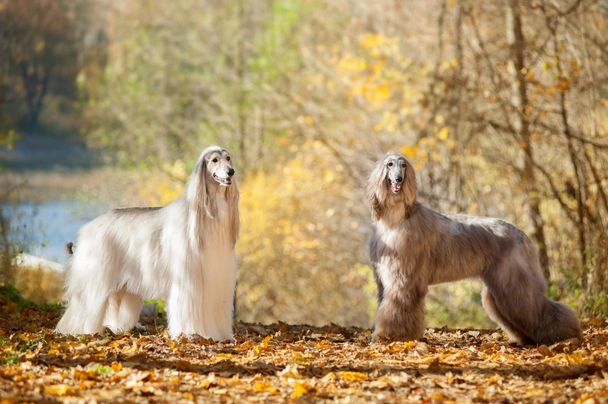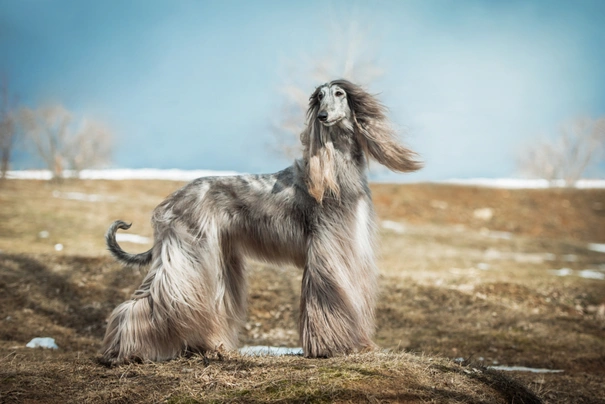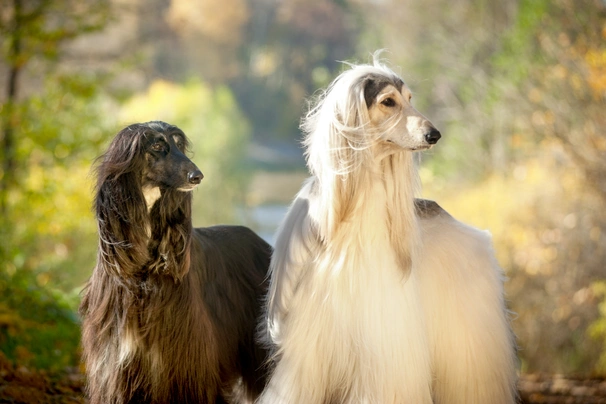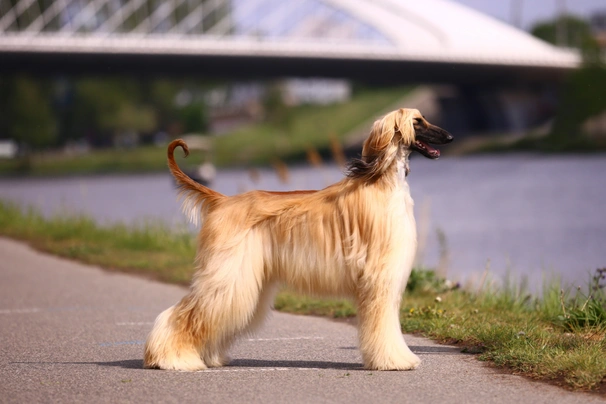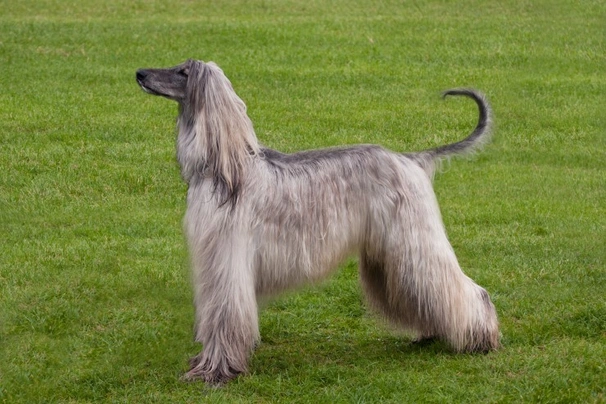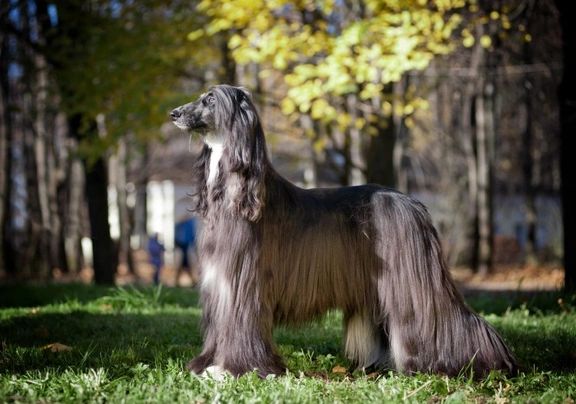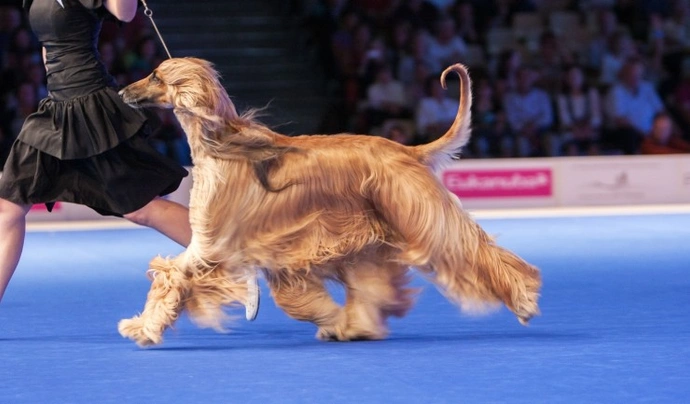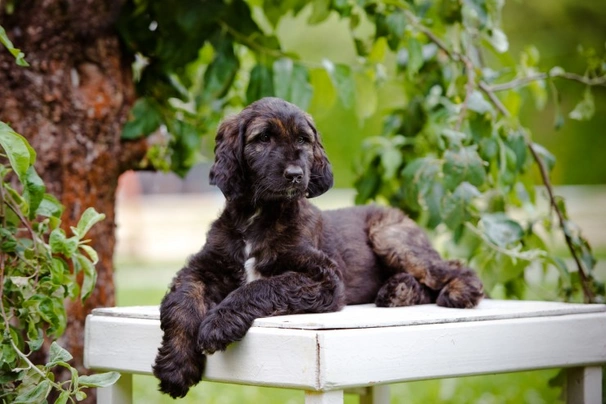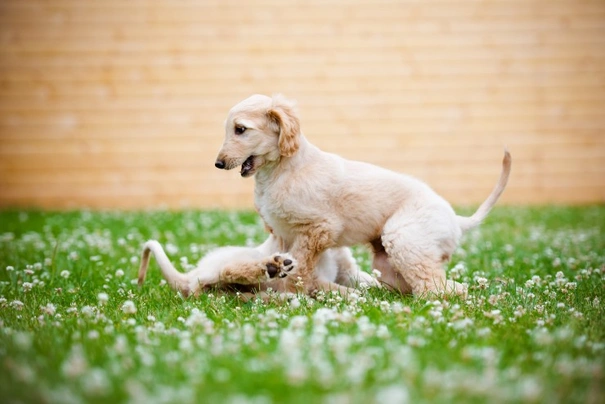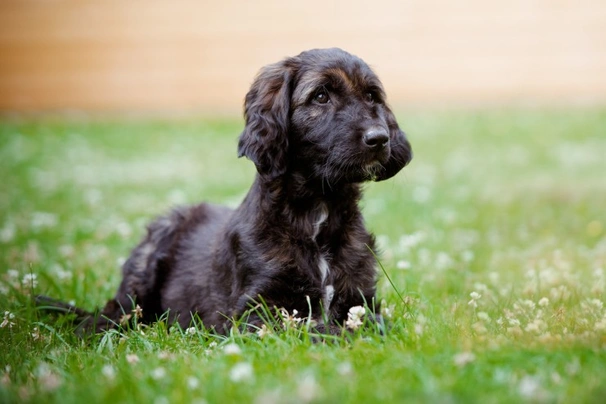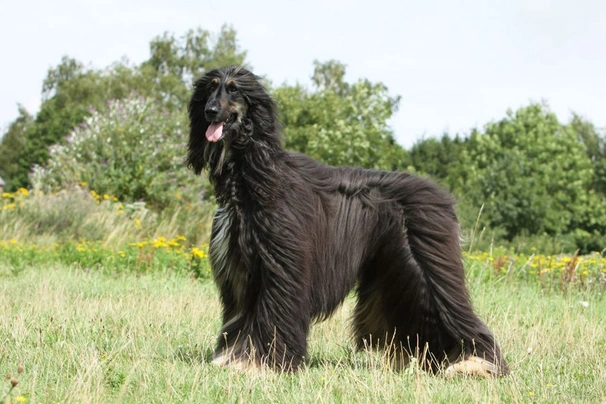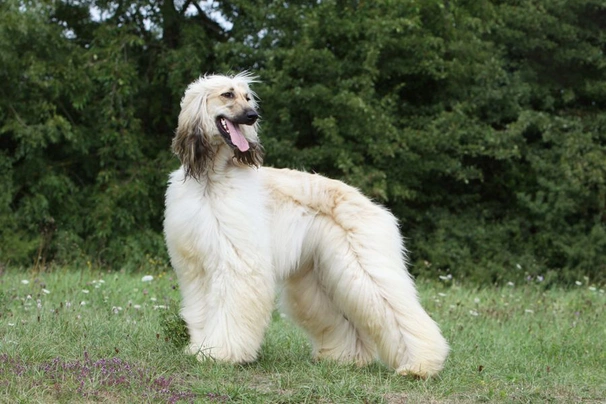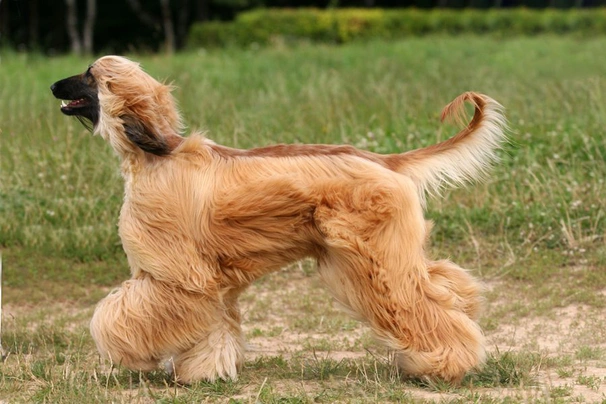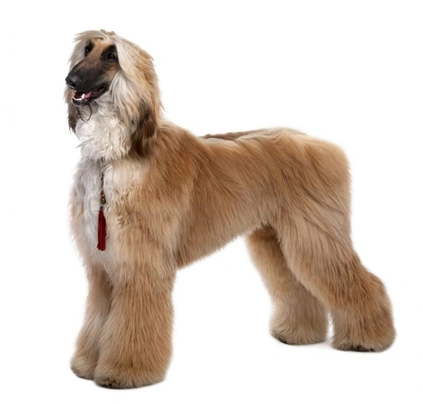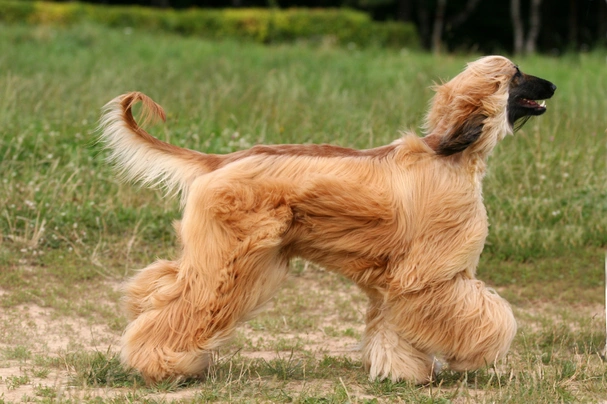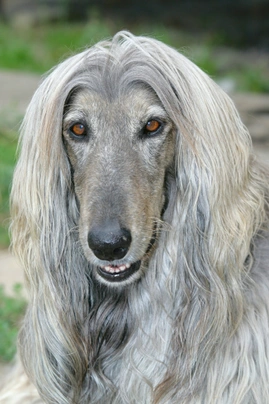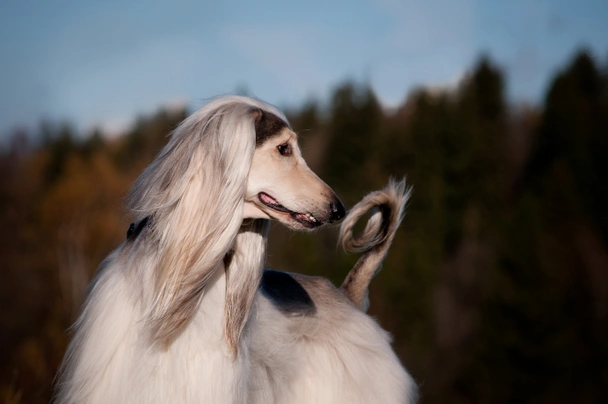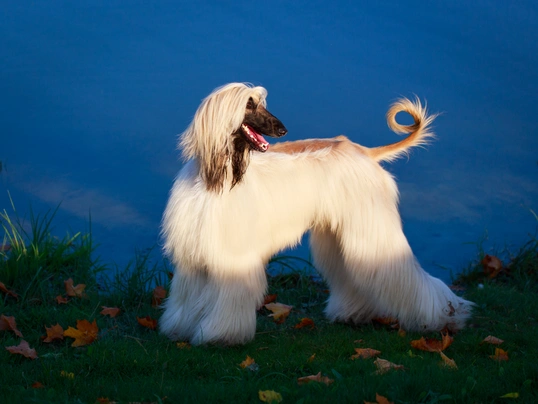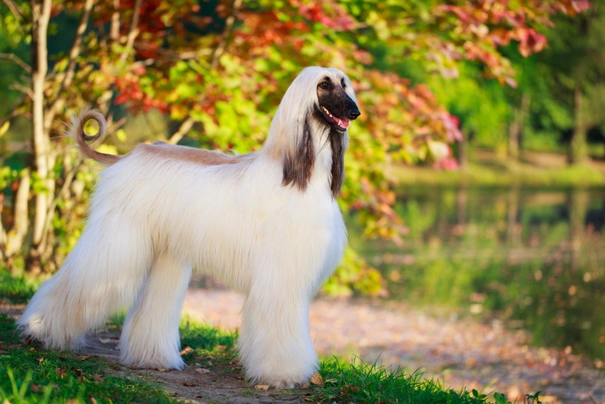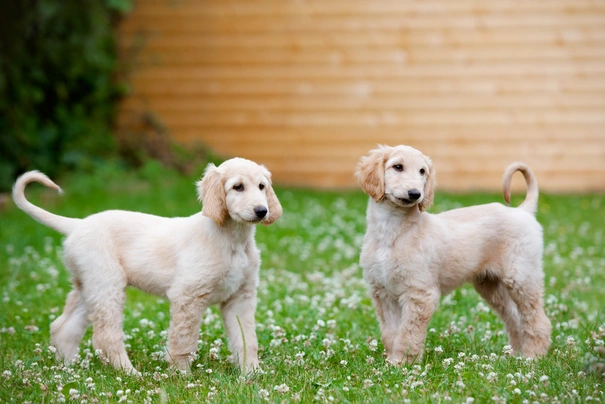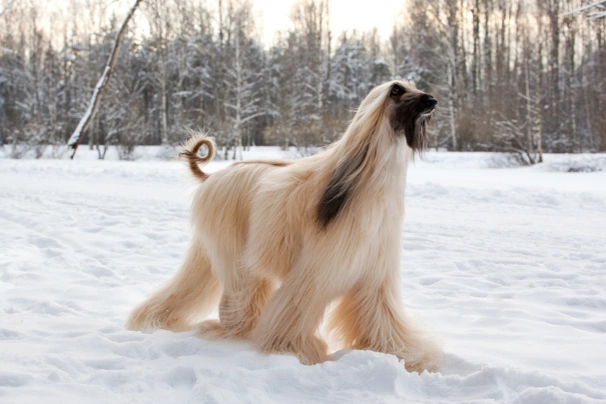Afghan Hound
Pros
Cons
Introduction of the Afghan Hound
The Afghan Hound is one of the most glamorous and regal dog breeds, renowned for its flowing coat, aristocratic bearing, and unique blend of elegance and athleticism. Originally bred as a sighthound in the rugged mountains of Afghanistan, this breed combines speed, agility, and a keen hunting instinct that still defines its character today. Afghan Hounds possess a striking physical presence with their long, silky coat and dignified carriage, attracting admirers worldwide.
Traditionally, Afghan Hounds served as hunters chasing swift prey such as deer and mountain goats, and their outstanding stamina and sight-hunting prowess remain key traits. In modern times, they balance these instincts with a role as devoted companion dogs suited to experienced owners who can accommodate their specific lifestyle demands. Afghan Hounds are not just showstoppers in the ring but also athletic and intelligent companions requiring abundant exercise and secure environments to thrive.
Their temperament mixes aloof independence with affectionate playfulness, making them fascinating family pets for those familiar with sighthounds’ needs. Owners must be prepared for intense grooming routines due to their luxurious coats and manage their high prey drive carefully, especially on walks. Afghan Hounds suit active homes with large gardens where they can express their natural behaviours safely. Understanding their unique exercise, mental stimulation, and care needs is essential for responsible ownership.
Perfect For
The Afghan Hound is perfect for active owners who appreciate a noble, dignified dog with a rich history and striking appearance. Ideal owners have ample time for daily rigorous exercise, enjoy outdoor activities like running or lure coursing, and possess experience handling an independent and sensitive breed. They fit homes with secure, spacious grounds to allow safe off-lead exercise.
Key Considerations
Potential owners should consider the Afghan Hound’s high grooming demands—daily brushing is essential to maintain coat health and prevent tangles. Their independent nature requires patient, positive reinforcement training and early socialisation. The breed’s strong prey drive mandates cautious management on walks, preferably on lead or within secured yards. Afghan Hounds may not be suitable for first-time dog owners or those in small apartments due to exercise and space needs.
History of the Afghan Hound
The Afghan Hound is among the oldest dog breeds, with an origin tracing back over 4,000 years in the mountainous regions of Afghanistan. As a member of the eastern sighthound family, it was traditionally bred to hunt fast prey such as deer, goats, and wolves across rugged terrain, utilising speed, endurance, and sharp eyesight. Due to cultural and religious restrictions limiting animal depiction in Islamic art, early visual records of the breed are scarce, adding to its mystique.
Afghan Hounds were introduced to the UK primarily in the early 20th century and quickly captured the attention of dog fanciers for their striking appearance and historic lineage. Early influential importations included the "Bell-Murray" strain in Scotland from 1920 and a heavier-coated type brought by Mrs Mary Amps to England in 1925. The first official breed standard was established in 1948 and remains foundational in defining the breed's hallmark traits.
Early Development
Originally known as "Persian Greyhounds" or Barukzy Hounds, Afghan Hounds were selected over millennia for speed, agility, hunting prowess, and adaptation to harsh mountains. They share genetic links with similar sighthounds like the Saluki, reflecting a common heritage tailored for endurance hunting. Their physical and behavioural characteristics closely align with their function as solitary coursing hunters.
Modern Recognition
The breed steadily gained popularity in the UK and worldwide during the 20th century, culminating in formal recognition by the Kennel Club. Today, the Afghan Hound is celebrated in the show ring and among enthusiasts for retaining its aristocratic elegance and independent spirit. Breed clubs continue to promote health screening and preservation protocols to ensure longevity and breed integrity moving forward.
Appearance of the Afghan Hound
Afghan Hounds stand out due to their combination of elegance and strength underscored by a distinctive appearance and graceful movement. Males typically measure 68 to 74 cm tall at the withers, and females range from 63 to 69 cm, with both genders weighing between 20 and 27 kg. Their physique displays well-defined muscles beneath a long, fine-textured coat that requires constant maintenance.
Size and Build
The breed has a moderately long body with a level topline that dips slightly toward wide-set hindquarters. The head is long but not overly narrow, featuring a pronounced occiput and a long muzzle, usually with a dark nose; lighter-coated dogs may have liver-coloured noses, both conforming to breed standards. Almond-shaped, slightly slanted dark eyes contribute to their noble, oriental expression. Their ears are low-set, covered in long silky hair, complementing the proud carriage of a long, muscular neck.
Forequarters are muscular with well-set shoulders and straight, long legs supporting a deep chest and well-sprung ribs. Their front feet are large and arched while the hind feet are narrower, aiding swift, graceful movement. The low-set tail with slight feathering ends in a ring and is carried high when the dog moves or is excited, emphasising their aristocratic poise.
Coat and Colours
The Afghan Hound’s hallmark is its long, silky, and fine coat covering the entire body. This luxurious coat was historically protective against the cold, harsh mountain climates of Afghanistan, giving it functional benefit alongside beauty. The coat colours accepted by the Kennel Club include black, brindle, cream, gold, red, blue, and white, in a variety of combinations and masks. Seasonal changes may affect the coat’s texture and shed patterns.
Distinctive Features
The breed’s gait is purposeful and elegant, characterised by powerful drive and the ability to cover long distances effortlessly. Their movement demonstrates elasticity and grace, with a trot that shows fluidity rather than the flight typical of herding breeds. Faults in conformation relate to overly high or low head carriage or hackney gaits, highlighting how movement must confirm both beauty and function.
Gender Differences
While size overlaps, males are generally taller and more robust than females, reflecting slight sexual dimorphism. Temperamentally, males might exhibit marginally more independence, though individual personalities vary widely. Both exhibit the dignified presence expected from the breed with aloof yet affectionate demeanors.
Temperament of the Afghan Hound
The Afghan Hound’s temperament reflects its origins as a solitary, independent hunter. Though often aloof and low in obedience rankings, their charm lies in a dignified and affectionate nature within family settings. They rarely show aggression or dominance, instead favouring gentle playfulness and calm companionship with those they trust.
Core Personality Traits
Afghan Hounds are strong-willed, independent, and self-confident, often thinking independently rather than simply obeying commands. Their aloofness towards strangers and sometimes wary nature necessitate early, consistent socialisation to build confidence and reduce fearfulness. Their sensitivity means they respond best to calm, positive training techniques.
Social Behavior
They tend to be reserved and cautious with strangers but affectionate with family members, developing strong bonds over time. Afghan Hounds generally do well with other dogs if socialised early but their high prey drive means small animals should be supervised closely or kept away. Their playful, clownish antics make them entertaining companions, but their size and sometimes boisterous play warrant supervision around young children.
Working Instincts
As sighthounds, Afghan Hounds retain a high prey drive and natural hunting instincts, requiring secure environments and careful management to prevent chasing behaviours. Their independent streak means they often keep their own agenda, which owners must acknowledge and gently manage.
Common Behavioral Challenges
Owners often face challenges in recall training due to prey drive, and Afghan Hounds may display stubbornness or sensitivity to harsh correction. Early socialisation and positive reinforcement techniques are essential. Separation anxiety is usually moderate but can increase without proper habituation. Excessive barking is uncommon but may occur when attention-seeking or unsettled.
Intelligence / Trainability of the Afghan Hound
Training an Afghan Hound necessitates a patient, gentle approach suited to their sensitive and independent nature. This breed responds best to positive reinforcement with treats, praise, and motivational encouragement, as harsh discipline commonly causes resistance or fear. Early initiation of training and socialisation lays the foundation for a confident, well-mannered adult Afghan.
Puppy Training Priorities
During the first six months, focus on fundamental obedience commands such as "sit," "stay," "come," "heel," and "leave it," alongside developing a reliable recall. Socialisation with varied environments, people, and other animals during this sensitive window is crucial. Avoid rushing training or using punitive methods that can damage trust.
Training Methods That Work
Positive reinforcement reigns supreme; creative training activities that incorporate the breed’s natural agility and interest can keep them engaged. Consistency and gentle firmness help establish handlers as trusted leaders. Incorporating lure coursing or agility can provide both physical exertion and mental stimulation aligned with their instincts.
Advanced Training Potential
Although not typical competitors in obedience trials, Afghan Hounds excel in activities such as lure coursing and agility that leverage their speed and endurance. Their unique personality requires training programs to respect their pace and sensitivity to build confidence and focus gradually.
Common Training Mistakes
Common pitfalls include impatience, harsh corrections, and training inconsistency. Owners should avoid forceful techniques that might cause Afghan Hounds to shut down or refuse compliance. Loose management of prey drive during off-lead time can lead to chasing and safety concerns.
Children and other
The Afghan Hound can be a gentle and affectionate companion for families with children, but their large size and natural prey instincts mean careful management is essential. Their playful, clownish nature often delights older children and teenagers, providing entertainment while fostering a bond based on mutual respect.
Age-Specific Interactions
For toddlers and young children, supervision is critical to prevent accidental injury due to the Afghan’s size and exuberance. Teaching children how to approach and engage gently with the dog promotes safe and positive interactions. With teenagers, Afghan Hounds may enjoy more active play and shared exercise.
Teaching Children Proper Interaction
Families should educate children on respecting the dog’s space and signals, acknowledging the breed’s sensitivity. Encouraging calm play and consistent boundaries helps prevent overstimulation and ensures harmonious relationships. Children must understand not to provoke chase behaviours or disrupt the dog’s rest.
Breed-Specific Considerations
The breed’s high prey drive necessitates caution around smaller pets or animals, particularly within the household. Afghan Hounds do best in homes where pet introductions are carefully managed and supervised. Their energy levels and size require family members to be mindful of exercise needs and potential knockdowns during play.
Creating Safe Environments
Safety measures include secure fencing to prevent escapes and having quiet, comfortable spaces for the dog to retreat when overwhelmed. Close monitoring of interactions, especially around young children or other animals, supports a peaceful home environment.
Health of the Afghan Hound
The Afghan Hound typically enjoys a lifespan of 12 to 13 years but is predisposed to a range of hereditary and acquired health conditions that owners and breeders must understand and monitor carefully. Maintaining breed health through regular veterinary care and genetic testing is vital to promote longevity and quality of life.
Breed-Specific Health Conditions
Common issues include hip dysplasia causing joint pain and lameness, cataracts and progressive retinal atrophy affecting vision, hypothyroidism impacting metabolism, and various cancers. Unique to the breed are conditions like Afghan Hound myelopathy and medial canthal pocket syndrome affecting the spinal cord and eyes respectively. Skin allergies and demodicosis are also prevalent, often exacerbated by inadequate grooming.
Genetic Testing Requirements
Breeders are encouraged to perform Health Scheme tests, including BVA/KC Hip Dysplasia Evaluation and DNA testing for Factor VII deficiency, degenerative myelopathy, and Haemophilia B. These tests ensure breeding pairs are clear of or carriers for serious conditions, reducing the risk of affected offspring and supporting responsible breeding.
Preventive Healthcare Schedule
Routine vaccinations, regular health screenings, and weight management are essential. Special care is warranted during surgical procedures due to the breed’s sensitivity to anaesthesia. Maintaining a balanced diet and proper exercise regimen helps prevent exacerbation of chronic conditions.
Insurance Considerations
Health insurance is recommended given the potential for costly treatments related to hereditary and acquired diseases. Comprehensive policies covering orthopedic, ophthalmologic, and cancer-related care provide peace of mind for owners investing in long-term wellbeing.
Caring for the Afghan Hound
Caring for an Afghan Hound involves attentive management of their coat, exercise, diet, and environment to maintain their health and happiness. Their unique combination of beauty and athleticism requires a structured daily routine catering to both physical and mental needs.
Daily Care Routine
Daily brushing is paramount to prevent mats and tangles in their fine, long coat, ideally using specialized brushes suited to their hair type. Scheduled exercise exceeding two hours ensures physical fitness and mental stimulation. Mealtimes should be regular, and hydration continuously available.
Living Environment Needs
Afghan Hounds thrive best in homes with spacious, securely fenced gardens where they can run safely and express their hunting instincts. Apartment or small flat living is generally unsuitable given their size and energy demands. Moderate climate is preferable, as they can be sensitive to extremes of heat and cold.
Seasonal Care Adjustments
During spring and autumn shedding seasons, grooming frequency should increase to address coat health and skin condition. After swimming or exposure to dampness, thorough drying prevents skin infections. Owners should monitor for signs of seasonal allergies or irritations and adjust care accordingly.
Senior Care Adaptations
Aging Afghan Hounds may require adaptations such as gentler exercise, joint supplements, and supportive bedding to ease mobility challenges. Continued mental engagement through gentle activities sustains wellness and quality of life in later years.
Grooming of the Afghan Hound
The Afghan Hound's grooming needs are notably demanding due to their long, silky coat, requiring consistent attention to maintain coat health, prevent matting, and preserve their distinctive appearance.
Coat Maintenance Schedule
Daily brushings with pin and slicker brushes are essential, focusing on detangling and fluffing. Skipping days can quickly lead to tangles that develop into mats, complicating care.
Professional Grooming Requirements
Regular professional grooming every 6 to 8 weeks helps manage coat condition, trimming, and bathing needs. Costs for such services can range between £50 and £100 depending on location and stylist expertise.
Home Grooming Techniques
Owners should use quality tools including metal combs, pins, and dematting gloves. Bathing routines use mild shampoos and conditioners, followed by thorough blow-drying to prevent matting. Gentle handling during grooming reduces stress for the dog.
Common Grooming Challenges
Mats tend to form especially behind ears and in feathered tail areas. Skin infections may arise if moisture is trapped, necessitating attentive drying after baths or swimming. Seasonal shedding requires increased grooming frequency to manage volume and maintain skin health.
Exercise of the Afghan Hound
Afghan Hounds are high-energy dogs needing extensive physical and mental stimulation to maintain wellbeing. Two or more hours of robust daily exercise is ideal, combining walks, running, swimming, and breed-specific activities.
Daily Exercise Requirements
Consistent exercise exceeding two hours maintains cardiovascular fitness and prevents boredom-related behaviours. Off-lead activities must be conducted in securely fenced areas due to their high prey drive and agility.
Suitable Activities
Activities such as lure coursing, agility, and free running help engage the breed's natural hunting and speed instincts. Mental challenges like interactive toys contribute to a balanced routine.
Exercise Restrictions
Puppies should have limited exercise until skeletal maturity to avoid joint damage. Extreme weather necessitates adjusted activity schedules; Afghan Hounds are sensitive to both heat and cold.
Mental Stimulation Ideas
Use puzzle feeders, scent trails, and obedience games to stimulate the Afghan Hound’s intelligent yet independent mind. Structured training sessions can merge physical and mental exertion effectively.
Feeding of the Afghan Hound
Providing balanced nutrition tailored to the Afghan Hound’s physiological and activity needs underpins their health and vitality throughout life stages. A focus on high-quality proteins and fats supports their lean build and majestic coat.
Nutritional Requirements
Afghan Hounds benefit from diets rich in animal proteins and essential fatty acids, supporting muscle maintenance and skin health. Avoiding excessive carbohydrates, particularly from grains, helps prevent digestive issues and weight gain.
Feeding Schedule Guidelines
Puppies require 3-4 meals daily with careful portion control increasing with age. Adults should have two regular meals timed to avoid bloat risk, typically around 190-360 grams daily depending on weight and activity level. Slow feeding bowls can help minimise gulping and bloating possibilities.
Special Dietary Considerations
Some Afghan Hounds may have food sensitivities or allergies, requiring elimination diets or supplementation. Joint supplements such as glucosamine and chondroitin can be beneficial for older dogs.
Weight Management
Maintaining an ideal body condition score prevents joint strain and metabolic disorders. Owners should monitor weight regularly and adjust portions to maintain fitness.
Afghan Hound price
Based on data from the last 12 months, Afghan Hound puppies in the UK typically range from £800 to £1,500 depending on breeder reputation, lineage, and quality. Prices tend to be higher with licensed breeders compared to individual sellers, reflecting the additional health testing and socialisation care.
Purchase Prices
Individual breeders generally price puppies between £800 and £1,200, while licensed breeders may ask from £1,200 to £1,500 for show-quality or well-socialised puppies.
Initial Setup Costs
Initial expenses include a quality dog crate, grooming tools, leash and collar, and bedding, which may total around £150 to £250 based on product choice.
Ongoing Monthly Expenses
Food costs average around £40 to £60 monthly for premium diets tailored to their nutritional needs. Routine vet checks, including vaccinations and parasite prevention, add approximately £30 to £50 monthly.
Lifetime Cost Considerations
Health insurance premiums may range from £30 to £50 monthly depending on coverage. Professional grooming services to maintain the Afghan’s coat quality can cost £50 to £100 every 6 to 8 weeks. Owners should anticipate annual veterinary expenses of £500 to £1,000 factoring in occasional treatments or emergencies. Overall, budgeting £100 to £150 monthly for comprehensive care and maintenance is recommended.
You can find Afghan Hounds for sale on Pets4Homes, a trusted marketplace offering a range of breeders prioritising health and ethical standards.
Buying advice
When seeking an Afghan Hound puppy, ensuring you find a reputable and responsible breeder is paramount to securing a healthy, well-socialised companion. The UK offers resources through breed clubs and verified marketplaces that support ethical purchasing decisions.
Finding Ethical Breeders
You can find Afghan Hounds for sale on Pets4Homes, a recognised platform hosting breeders committed to health testing and welfare. The Southern Afghan Club provides breeder listings adhering to strict Codes of Ethics prioritising genetics, temperament, and sustainability.
Health Testing Verification
Responsible breeders provide documentation for health tests including BVA/KC Hip Dysplasia scores and DNA tests for Factor VII deficiency, degenerative myelopathy, and Haemophilia B. Verifying these certificates supports a commitment to genetic soundness.
Puppy Selection Process
Observe puppy behaviour for confidence, sociability, and temperament aligned with breed traits. Ask breeders about socialisation practices, early health care, and dam conditions. Transparent breeders welcome visits and temperament assessments.
Contract and Guarantee Review
Ensure contracts include health guarantees, return policies for genetic conditions, and commitments to ongoing support. Beware of red flags such as very low prices or unwillingness to share health records.
Rescue and Adoption Options
Consider breed-specific rescue organisations which may offer well-assessed dogs needing homes. Adoption can provide a rewarding path to responsible ownership with known health and behavioural history.
